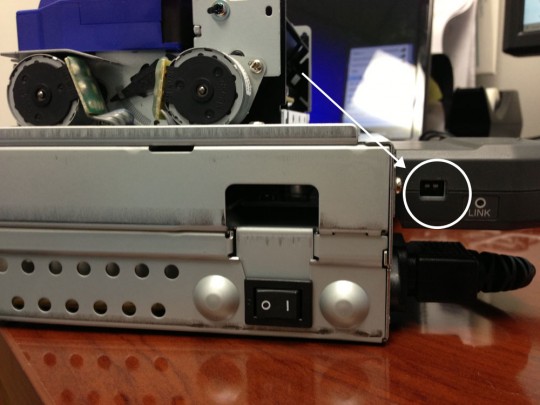The wonderfully undocumented SP500 printer with wireless Ethernet connection has been the bane of my existence for the last few days.
So I have the IFBD-HW03/04 model, which isn’t even mentioned really in the manual. That means that my firmware is a thousand years old.
This is silly for many reason, but it also forces me to use a Windows machine as well… which just makes me grind my teeth. YOU HAVE TO HAVE A WINDOWS PC WITH IE to do this.
First things first, find the MAC address.
- Turn of the printer
- Hold the FEED button
- Turn it back ON
- After you hear the first BEEP, let go the FEED button
- Wait a minute or two. Yeah, seriously.
- It’ll print out one page of useless information. And then with a big pause in between, it’ll print out the network information, which is what you need.
Then load up the Star Micronics Printer Utility which you can actually download from their website.
- Choose SP512 as your printer
- Ethernet as your connection.
- You should be able to hit “Search Network” and find the printer, but that has never worked for me. So….
- Hit Temporary IP Address Assignment
- Fill in the MAC Address from your receipt
- On your Windows machine, Start > Run > cmd
- Find your IP address of your machine with “ipconfig”
- Whatever your IP is, give the printer something similar, so you are XXX.XXX.XXX.153 make the printer .158 or something
- Hit OK and you should be prompted to go to the control panel.
Next, the interface
- The tool will open the interface in your default browser. If this is not IE (which hopefully it isn’t’), open up IE and type in the printer’s IP.
- The username is just “root”
- Go to NIC
- Then got to WiFi-.11b (no it does not support WAP)
- Choose “Infra.” as your Wireless Mode (I guess there wasn’t room for “Infrastructure”)
- Pop in your SSID of the network you want it to join and the WEP key.
NOW – theoretically this should just work. But I haven’t had any luck.
How to reset the printer’s Ethernet settings.
If you screw something up, you’re dead in the water. The problem is you have to connect to the printer in Ad-Hoc mode (SSID STAR-WIFI) before you can set it up. So if you mess something up on the network settings, you can’t get back in to fix it. Fortunately, you can reset this (although you’d never know from reading the manual) but hitting the second dip switch on the WiFi card.
Open up the case
Find the second switch on the WiFi card. Make sure the printer is OFF. Push it to the DOWN position. Then turn the printer back ON and let it boot up. After that, turn it OFF again. Put the switch back to the UP position and turn it back ON. All the settings are now cleared 🙂
